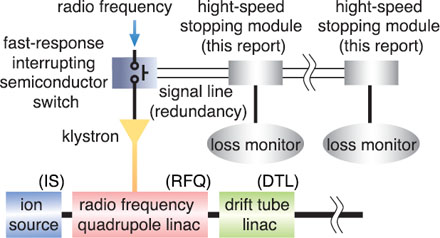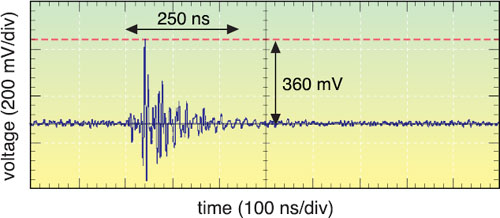The beam power of the high intensity proton accelerator at J-PARC is 1 MW, which is one order of magnitude higher than any other pulse-driven proton accelerator now in operation.
When certain errors occur in the accelerator, the beam is diverted from its ideal orbit and collides with the components of accelerator. The diverted beam produces intense heat damage within a few microsecond, as shown in Fig. 4-1. In addition, components are to be activated by the beam collision, which will delay maintenance service. Therefore, when beam collisions occur, an interruption of beams within a few microsecond is necessary.
Beam interrupting modules having such response times were developed at other institutes. However, many modules malfunctioned due to the electromagnetic noise emitted by the accelerator itself, and these modules have not been suitable for practical use. Additionally, the causes of these malfunctions were not analyzed yet. The fast-response beam interrupting system was designed for the usage at J-PARC (Fig. 4-2). The prototype module for this system was used to investigate its performance. It was found that the malfunctions of modules were caused by normal operation because noises were detected through the power supply sysytem.
The characteristics of noises were measured (Fig. 4-3). Using these results, the fast-response and high-reliability module employing a programmable LSI, Field Programmable Gate Array, was developed. |


